Making vertical retail work for Hong Kong: Savills
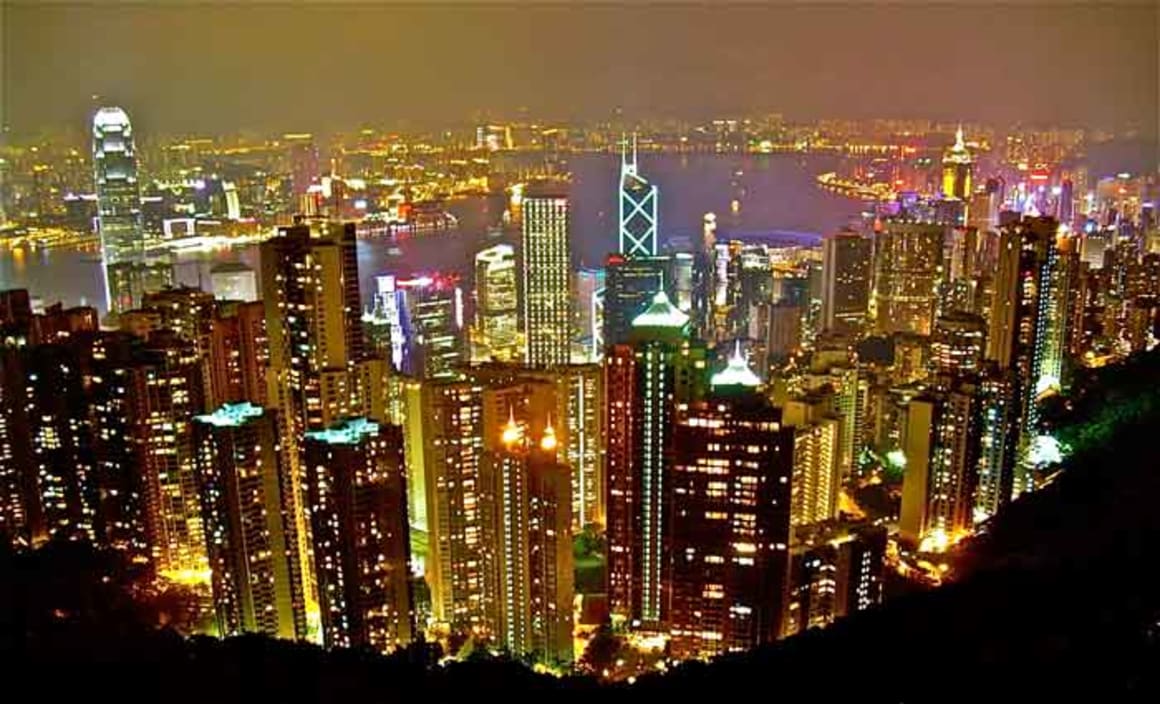
GUEST OBSERVER
Making vertical retail work for Hong Kong Vertical retail or so-called “Ginza- style” retail is increasingly popular in Hong Kong with both landlords and tenants, but this retail format offers both unique challenges as well as advantages to investors and users.
Why Ginza?
Ginza is one of the most popular and expensive shopping districts in Tokyo; like many parts of the Japanese capital, high land prices led to the early development of high- rise retail-cum-commercial buildings.
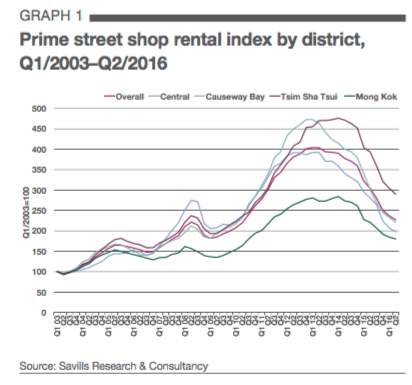
This type of building offers space at more affordable rents compared to high street premises, and also an extended, even 24-hour, operation environment which cannot been found in traditional shopping malls. Therefore, it is particularly popular for F&B, Izakaya (Japanese-style bars) and Karaoke operators in Tokyo.
Hong Kong, especially the core retail districts, has the same space constraints as central Tokyo. Going upstairs or upwards seems to be a rational option for some retail businesses with limited capital or less reliance on foot traf c or impulse spending. A Ginza-style retail concept provides a more affordable alternative for independent retailers facing strong competition from international retailers for prime street-front space. This might be the only way for small retail businesses to access a prime districts nowadays – especially as street shop rents in prime areas have risen by nearly 140 percent since 2003.
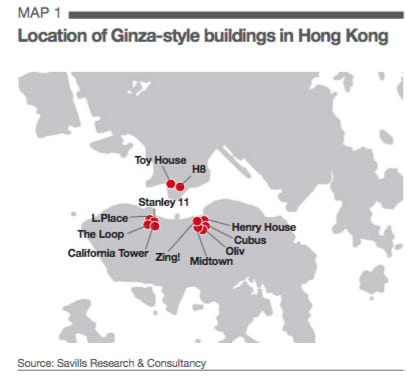
Likewise, landlords and investors are attracted by the decent returns generated from Ginza-style retail development. Spurred by the strong demand as well as the soaring rents of ground oor shops on prime streets, unit rents for Ginza-style retail space in prime locations can be 50% to 100% higher than general of ce space in the same locality.
Ginza-style retail has become more popular in Hong Kong over the past decade and mushroomed in core retail and entertainment districts including Causeway Bay, Tsim Sha Tsui and Central.
Typical development form
The concept of Ginza-style retail first sprang up in Hong Kong in the early 2000s, as landlords converted smaller of ce/commercial property in prime shopping areas for retail use to maximise their rental income. There are also purpose-built high- rise buildings designed for F&B tenants. Development scale can range from a few oors (the Tokyo version) to a high-rise tower of over 20 storeys (the Hong Kong version) with typical oor plate ranges from 1,500 to 8,000 sq ft.
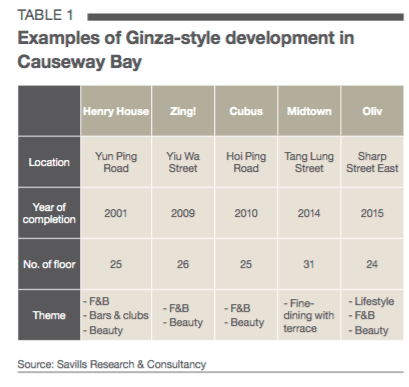
These buildings are usually located in secondary streets of prominent shopping areas and are characterised by a rather low-pro le entrance. In Hong Kong, these buildings are marketed as a chic F&B destination with multiple choices with 50 to 60% of the total oor area allocated to F&B, including restaurants and clubs, with a mix of services and service-based retail.
Developed by H Development in 2001, Henry House on Yun Ping Road in Causeway Bay is one of the early examples of a purpose-built Ginza-style building in Hong Kong. The 28-storey building has a oor plate of about 1,500 sq ft with a single tenant on each floor.
Other examples include Cubus, a joint venture development of The Hong Kong Parkview Group, CSI Property Ltd and Phoenix Property Investors. Opened in 2010, the 25-storey building focuses on F&B, hair and beauty and specialty retailers. In Central, Stanley 11 on Stanley Street, has 20 tenants in over 26 storeys. With a focus on affordable F&B offerings, the building is a popular lunch location for the office workers in Central.
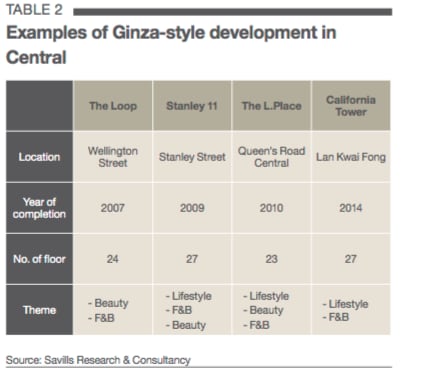
To amplify the investment returns and also for branding purpose, some developments feature ground- oor retail, such as Oliv on Sharp Street East in Causeway Bay. Completed by Magusta Group last year, the project has high-end watch brand Franck Muller as the anchor tenant on the rst two oors of the 24-storey building. The rest of the building has a mix of lifestyle, F&B and beauty retailers, with floor plates from 1,809 to 2,090 sq ft.
How to be upwardly- mobile
Ginza-style buildings only work best in core districts, where there is substantial footfall ie. enough customers to fill 20+ restaurants or bars in a single location!
According to an experienced Ginza-style developer, the optimal oor plate size is between 2,000 and 3,000 sq ft, enabling tenants to occupy the whole oor with a reasonable lump sum rental and adequate resources. They have attracted a number of new and ourishing businesses to start their operations, including international retailers and F&B operators, such as Lululemon, Mango Tree (an authentic Thai restaurant from Bangkok) and Jamie’s Italian Restaurant, who have set up their first Hong Kong’s outlet in one of these buildings.
For developers, Ginza-style retail can squeeze greater value from an ordinary of ce building, especially those with small oor plates (a stronger theme or a hub with similar retailers or groups of retailers which attract similar customers.
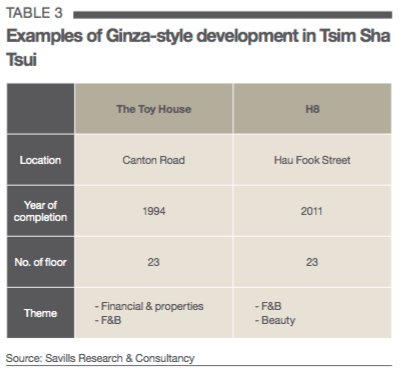
For example, a building with a gym, spa services and healthy eating options will attract a stylish, tness-conscious clientele. Similar to traditional retail development, theming and branding are becoming increasingly imperative to stay ahead of the game. Henderson Land’s new-build H Queen’s on Queen’s Road Central, has an artistic theme, with spaces for art galleries as well as shops and restaurants.
A brand new development by H Development, Aura On Pennington aims to offer a ve-sense sensation in one destination to its customers, from art installations and motion- activated sounds to scent infusions and interactive signage.
Uphill struggles
Ginza-style retail does not guarantee success and comes with particular challenges. A key is vertical transport – can your elevators cope? A 20- oor building needs a rapid and efficient lift system to ensure that shoppers don’t get bored of waiting in the lobby, especially at lunchtime. A single bad experience waiting for a lift could turn them off for good. If your lifts are slow, don’t ll the top oors with restaurants.
A Ginza-style building also needs to be able to cope with the utility needs, such as water supply, electricity, oor loading and waste management, of its tenants. An older of ce conversion might not be able to cope with the needs of ve oors of F&B operators. Stanley 11, for example, is able to get around these problems for F&B tenants by providing a grease trap and individually-controllable air conditioning. In addition to utility provisions, new technology such as free wifi, a digital directory and interactive restaurant queuing systems also help to enhance the overall customer experience.
In Hong Kong’s crowded retail market, Ginza-style retail offers a solution for both landlords and tenants. We foresee these buildings will remain a popular asset type. The key factors to bear in mind are: location, utility capacity, tenant mix and theming. Because this trend has grown over the last decade, a well-themed and curated tenant mix can mean the difference between success and failure.
This is an excerpt from Savills World Research.